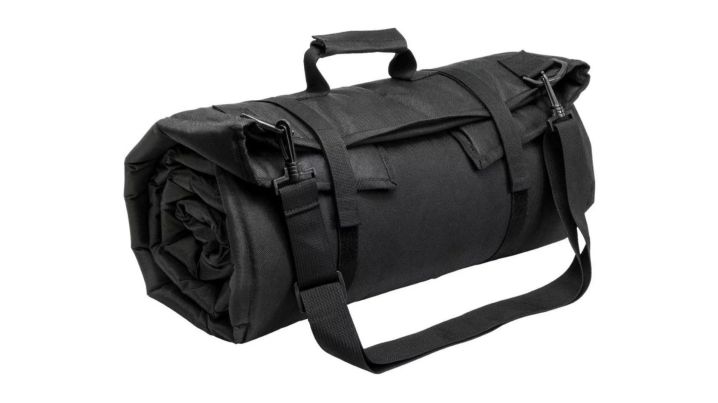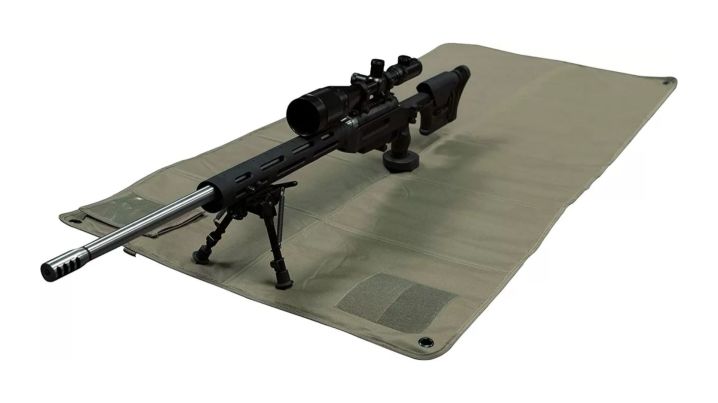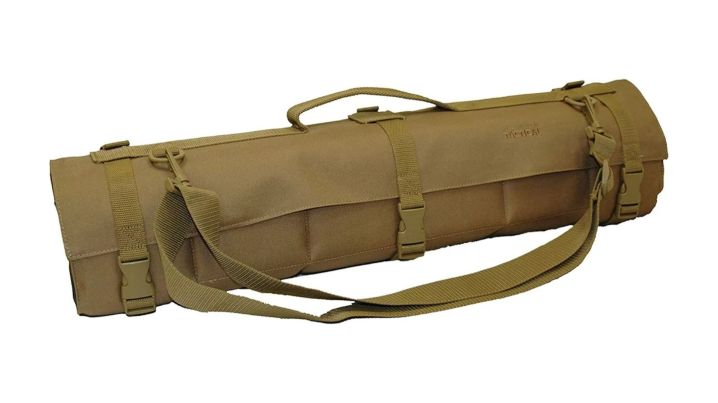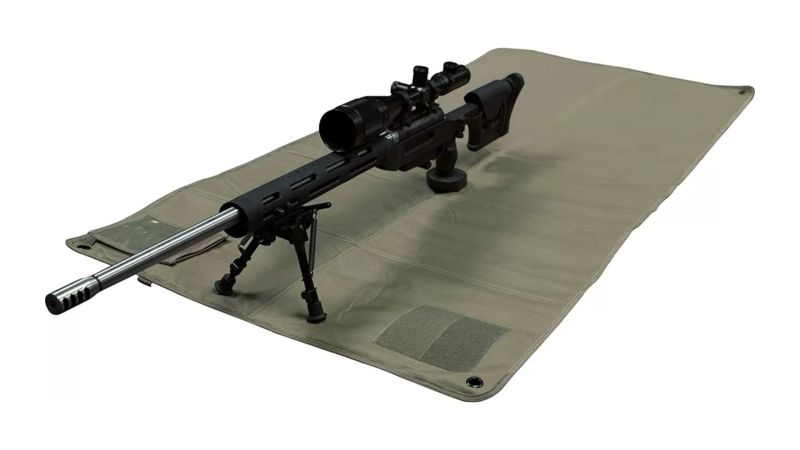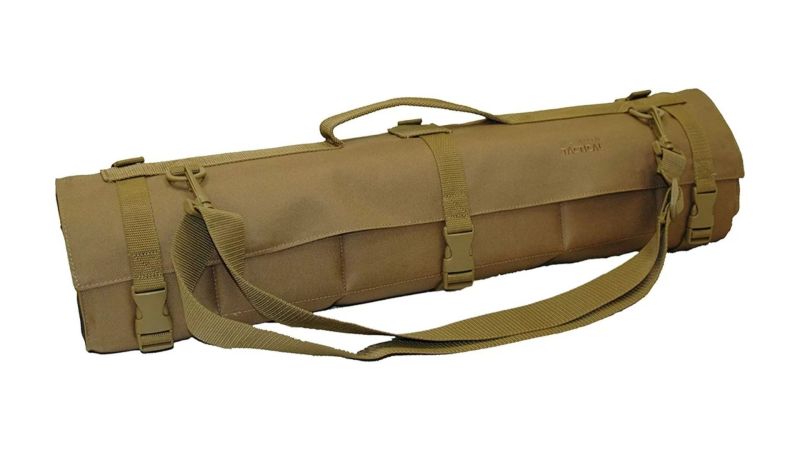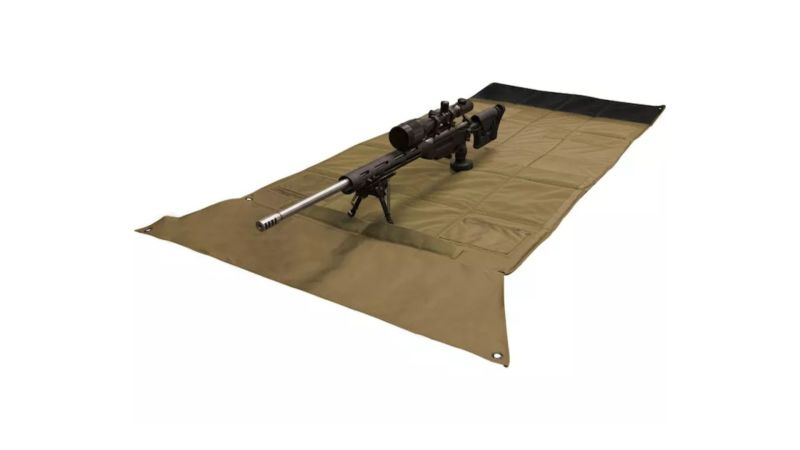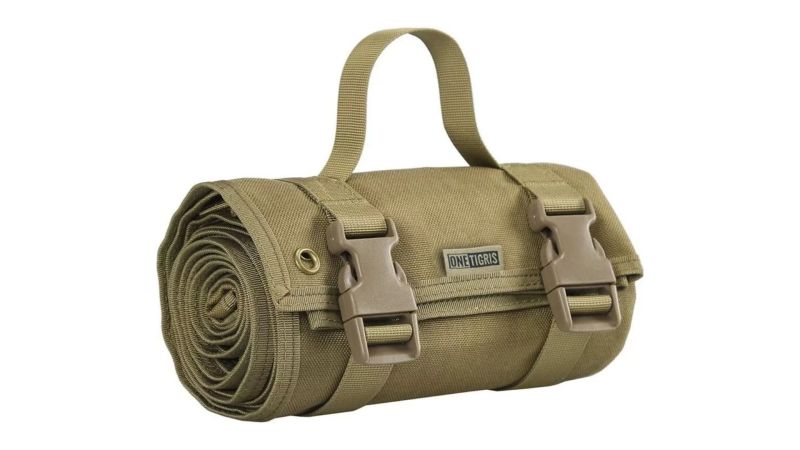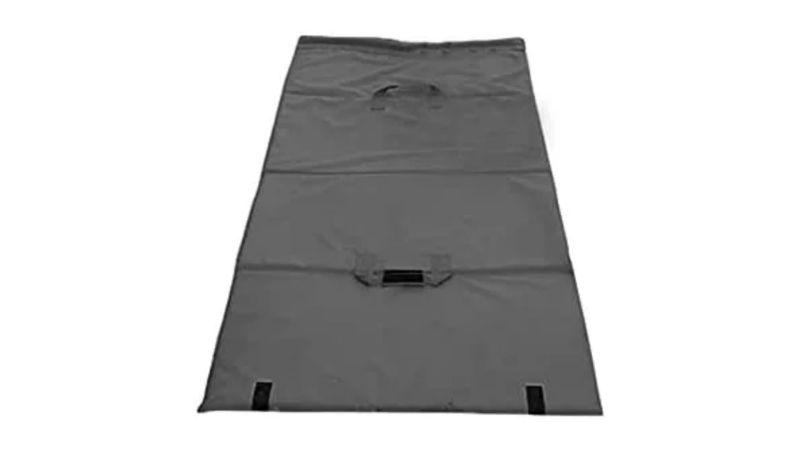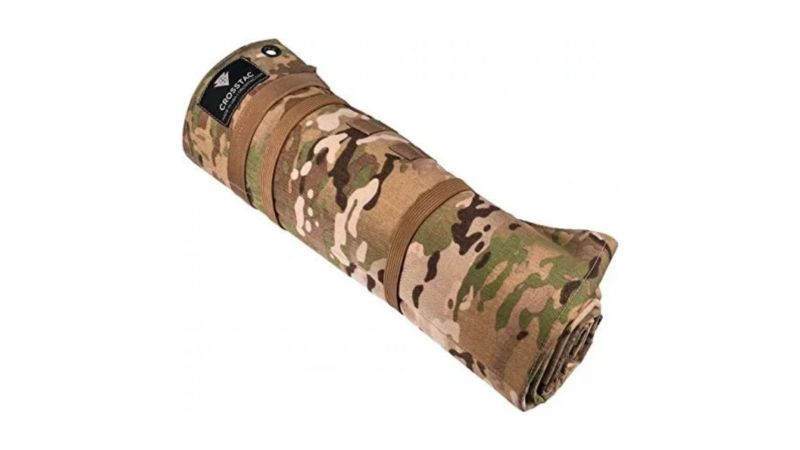We may earn revenue from the products available on this page and participate in affiliate programs.
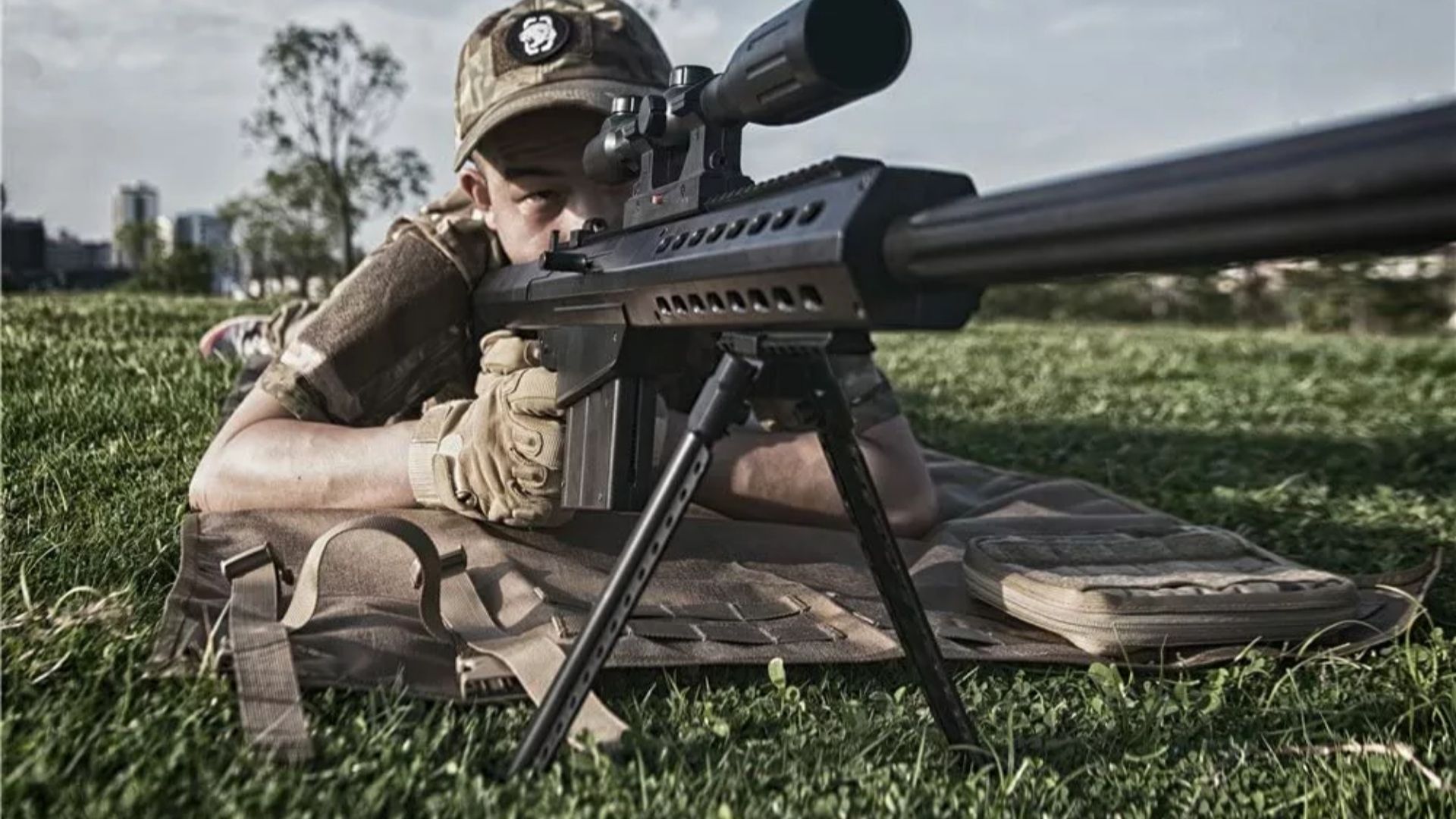
As any hunter or rifleman will tell you, a considerable amount of time can pass between setting up in your hide and breaking the perfect shot at your quarry. More often than not, that time is spent lying prone somewhere cold, damp, and muddy. Far from being a mere creature comfort, a quality shooting mat can help you maintain a better state of readiness and keep your focus on the task at hand.
In this article, we group shooting mats into two categories: field and range. Field mats are lightweight and easily carried into the backcountry, but are more austere than range mats which are ideal for shooting at established facilities or when operating in close proximity to a vehicle.
- Best Overall: NcSTAR VISM Roll Up Shooting Mat
- Best Value: MidwayUSA Lightweight Tactical Shooting Mat
- Honorable Mention: Boyt Harness Bob Allen Tactical Shooting Mat
- Best Padded: MidwayUSA Pro Series Gen 2 Competition Shooting Mat
- Best Unpadded: One Tigris Wild Voyager Shooters Mat
- Best Range: Crosstac Precision Range Shooting Mat
- Best Tactical: Crosstac Precision Recon Shooting Mat
Methodology
In this article, we recommend the best shooting mats for use in the field or at the range. Our selections are based on experience with comparable equipment at Gunsite Academy’s Long Range Precision Rifle course and extensive research including reviews of manufacturer specifications, professional publications, product videos, and other sources.
Our research started with identifying the key characteristics essential to the performance of a quality shooting mat, namely dimensions, thickness, material, and weight. These characteristics are discussed in detail later in this article in the section “What to consider when buying a shooting mat.”
Our research team then searched for shooting mats on e-commerce websites including Amazon, Cabela’s, OpticsPlanet, Brownells, MidwayUSA, and many more, with a focus on selecting those products that offer an optimal balance between design characteristics. The most promising shooting mats were then selected for in-depth research via consumer and independent third-party print and video reviews, as well as discussions within the Task & Purpose community of recreational shooters, hunters, and military personnel.
The final research step leveraged all the data, results, and commentary to develop specific questions for each manufacturer. The answers provided by the manufacturers gave us a better understanding of each shooting mat’s performance and helped us develop our final set of recommendations.
It is of the utmost importance to those of us at Task & Purpose to ensure that you, our readers, know our commitment to fair and open product reviews and recommendations so that you can trust us to provide you with unbiased, balanced information.
Best Overall
NcSTAR VISM Roll Up Shooting Mat
Best Value
MidwayUSA Lightweight Tactical Shooting Mat
Honorable Mention
Boyt Harness Bob Allen Tactical Shooting Mat
Best Padded
MidwayUSA Pro Series Gen 2 Competition Shooting Mat
Best Unpadded
One Tigris Wild Voyager Shooters Mat
Best Range
Crosstac Precision Range Shooting Mat
Best Tactical
Crosstac Precision Recon Shooting Mat
Our verdict on shooting mats
A quality shooting mat is a worthy piece of gear to add to your kit whether heading to the range for sight-in work or out into the field in search of this season’s eight-pointer. Shooting mats vary from simple ground cloth to more feature-rich models with padding, pockets, and integral bipod supports.
What to consider when buying shooting mats
Types of shooting mats
Field
Field mats are designed for a balance between comfort and portability. These mats generally have minimal or no padding to reduce weight and bulk. All field mats roll up into a compact package with the smallest mats taking up less space than a one-liter Nalgene bottle. Field mats generally weigh less than three pounds, with the lightest designs weighing just one pound.
Range
Range mats are intended for use in established areas accessible by vehicle where the shooting stations will typically be on concrete pads or gravel. As such, range mats typically have generous padding — usually 0.25 to 0.5 inches of closed-cell foam. Range mats may also have other features such as pockets and integral bipod supports.
Key features of shooting mats
Dimensions
Field mat dimensions are a matter of user preference. Minimalist mats may be 60 inches or less in overall length, putting both the rifle bipod and the user’s legs on the ground. As the purpose of a shooting mat is to keep the shooter and their gear clean and dry, this is a poor trade-off. We recommend mats at least 70 inches in overall length, with a preference for 80 inches if possible.
Field mat width generally ranges from 27 to 36 inches, with the wider mats offering space for not just the shooter, but also log books, ballistic data cards, ammo boxes, etc. Our recommendation is to select a shooting mat that is at least 30 inches wide unless there is a compelling reason to choose a narrower model.
Thickness
Also a matter of user preference, padding adds not only comfort, but also bulk when the shooting mat is stored for transport. For range mats, padding is essential, but the need is not as clear for field mats where the shooter can not only select the site, but also clear the area of rocks and debris, much as one would do when preparing a site for a tent or tarp shelter. For this reason, we recommend an unpadded or minimally padded mat for use in the field.
Material
Whether nylon or polyester, a shooting mat must have a waterproof coating on the bottom surface to fulfill its primary function of keeping the user and their gear dry and comfortable. Higher denier material will offer greater durability in exchange for greater weight.
Weight
Field mats should weigh no more than three pounds and ideally less than 1.5 pounds. Weight is generally not a concern for range mats, as the shooting station will likely be reasonably close to a vehicle.
Pricing
Prices for shooting mats range from under $30 to more than $200. DIY options are certainly possible (see Tips and tricks below) if desired, but our Best Overall and Best Value recommendations were selected with affordability in mind.
Tips and tricks
A shooting mat is basically just a ground cloth with optional padding. For years, the ultralight backpacking community has used common Tyvek HomeWrap sheets for a vapor barrier in a layered sleep system consisting of a ground cloth, closed-cell foam pad, and sleeping bag or quilt.
If style and color aren’t a concern, an inexpensive shooting mat can be easily constructed using Tyvek, available cut-to-length on eBay, or by the roll at most home improvement stores. Wash the Tyvek in a thumper-style washing machine (without soap) and allow it to air dry — this will make the Tyvek softer and considerably less noisy than Tyvek straight off the roll. Use Gorilla Tape to fabricate stake loops in each corner and add a closed-cell foam pad if additional comfort is desired.
FAQs about shooting mats
Q: What are shooting mats used for?
A: Shooting mats allow hunters, recreational shooters, and military personnel to set up a shooting position in austere conditions where the ground may be wet, muddy, sandy, or covered in other undesirable material (e.g., coyote dung in the high deserts of Arizona).
Q: Why do you need to preload your bipod?
A: Preloading a bipod is when the shooter “leans in” to the rifle, pressing forward with their entire body against the bipod to minimize the effect of the recoil impulse and the tendency for the rifle to jump off target after a shot. Done correctly, this allows the shooter to retain the sight picture during and after the shot, and substantially reduces the time required for a follow-up shot if necessary. Some shooting mats include ridges or straps to secure the feet of the bipod so that they don’t slip when the bipod is preloaded. This feature is a “nice-to-have” rather than a “must-have” as the bipod can be preloaded effectively by using rubberized or spiked bipod feet or placing a small weight (e.g., sandbag) in front of the bipod.
Q: In what environment will you mainly be using the shooting mat?
A: Generally speaking, shooting mats are used either on hard surfaces at established shooting facilities (concrete pads, gravel, etc) or in the backcountry on bare ground, which may also be wet, muddy, or sandy. The shooting mat keeps the shooter and their gear dry, clean, and reasonably comfortable.
Q: Can I stake down the shooting mat?
A: Yes, many shooting mats have either grommets or stake loops in the corners to secure the mat during windy conditions.
Q: Can I use a shooting mat in wet environments?
A: Absolutely! In wet environments, a quality mat makes the shooting experience more comfortable and improves the ability of the shooter to focus on the fundamentals: sight picture, breathing control, and the surprise trigger break.
Q: What else can I use a shooting mat for?
A: Shooting mats are handy for a multitude of uses. I keep one in my truck for when I have to repair or maintain my truck. A shooting mat can also double as a ground cloth for camping or even as a small picnic blanket for lunch by the stream. Padded shooting mats can even replace closed-cell foam or inflatable sleeping mattresses when camping.
